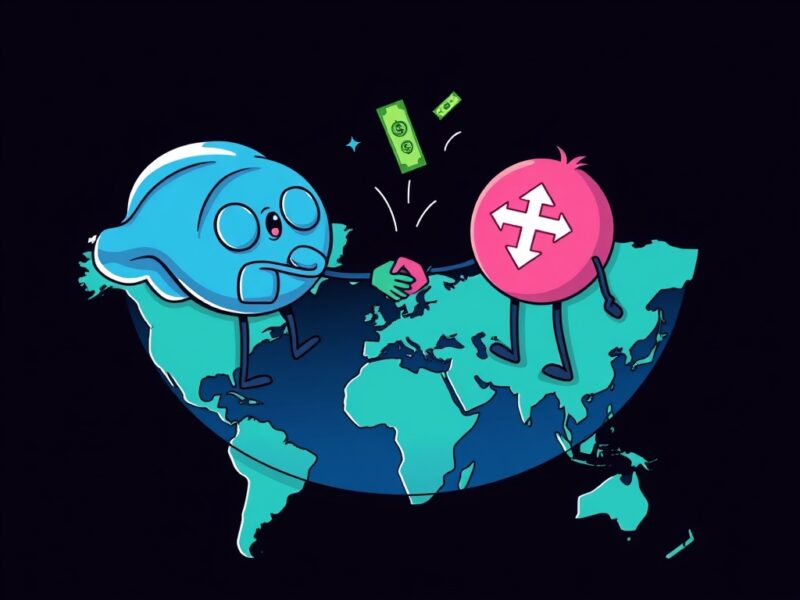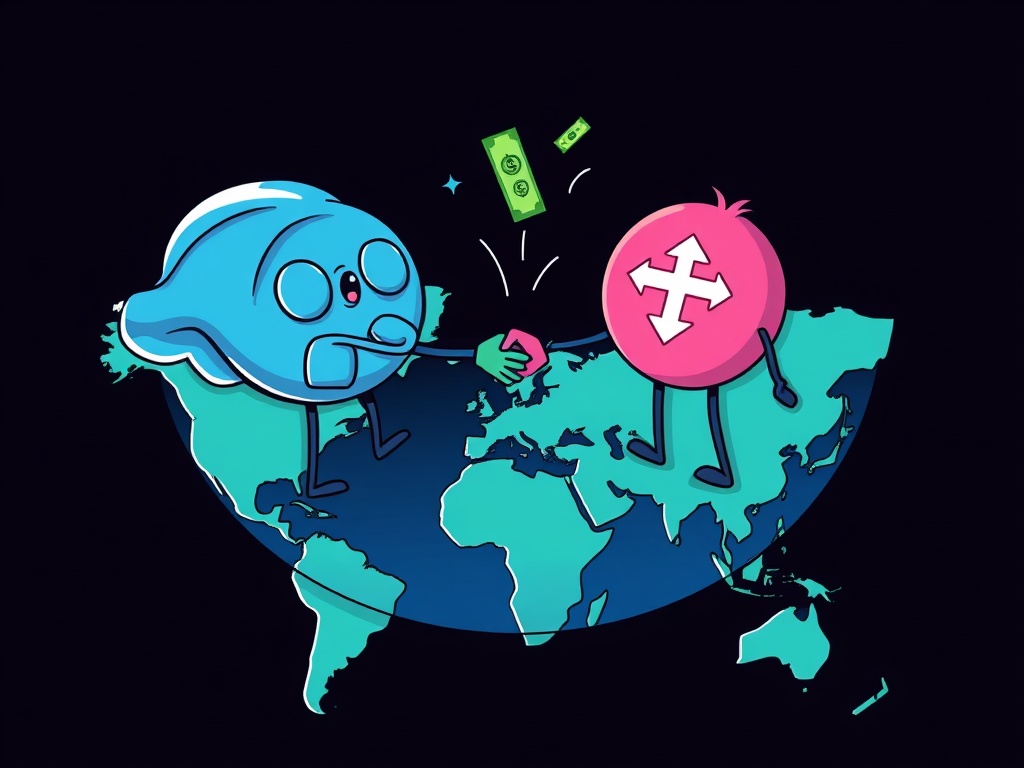Unlocking Global Payments: The Transformative Ripple Thunes Partnership
0
0

BitcoinWorld

Unlocking Global Payments: The Transformative Ripple Thunes Partnership
The world of global finance is constantly evolving, and at its heart, the quest for faster, more efficient payments continues. A significant stride in this direction has been made with the recent strategic Ripple Thunes partnership. This collaboration is set to redefine how businesses and individuals send money across borders, leveraging cutting-edge blockchain technology to facilitate real-time transactions in local currencies. It’s an exciting development for anyone interested in the future of digital payments and the practical applications of cryptocurrency innovation.
What Does the Ripple Thunes Partnership Mean for Global Payments?
The news of the Ripple Thunes partnership, initially reported by Watcher.Guru, signals a powerful synergy between a leading blockchain payment provider and a global payments company. Thunes, based in Singapore, specializes in enabling cross-border payments for businesses, offering connections to a vast network of payment methods worldwide. Ripple, renowned for its enterprise blockchain solutions, provides the underlying technology that powers faster, more transparent, and cost-effective international money transfers.
This collaboration aims to address common pain points in traditional cross-border payments:
- Speed: Traditional methods often involve multiple intermediaries and can take days.
- Cost: High fees and unfavorable exchange rates eat into transaction values.
- Transparency: Lack of real-time tracking makes it hard to know the status of a payment.
By integrating Ripple’s blockchain capabilities, Thunes can now offer its clients an enhanced service. This means businesses using Thunes will benefit from near-instant settlement of funds, directly in local currencies, across various corridors. The Ripple Thunes partnership is a game-changer for businesses seeking to expand their global reach and streamline their financial operations.
How Does Ripple’s Blockchain Technology Power This Collaboration?
At the core of the Ripple Thunes partnership is Ripple’s innovative blockchain technology. Specifically, RippleNet, Ripple’s global payments network, allows financial institutions and payment providers to send money globally, instantly, reliably, and for a fraction of the cost of traditional systems. This network utilizes the XRP Ledger, a decentralized, open-source blockchain, for its speed and efficiency.
When Thunes leverages Ripple’s technology, it means:
- Direct Connections: Payments bypass legacy banking systems, moving directly between parties.
- Real-time Settlement: Transactions are confirmed and settled in moments, not days.
- Reduced Costs: Lower operational overheads and competitive foreign exchange rates.
- Enhanced Transparency: End-to-end visibility of payment status.
This technological integration provides Thunes with a robust infrastructure to expand its payment corridors and offer superior service to its diverse client base, which includes fintechs, banks, and money transfer operators. The goal is to make global payments as simple and efficient as sending an email, a vision that the Ripple Thunes partnership is actively bringing to fruition.
The Impact: What’s Next for Cross-Border Payments?
The implications of the Ripple Thunes partnership extend far beyond just faster transactions. This collaboration sets a precedent for how traditional payment firms can embrace blockchain technology to innovate and remain competitive. As more companies adopt similar strategies, we can expect a significant shift in the global payments landscape.
Key impacts include:
- Increased Accessibility: Opening up new payment corridors, especially in emerging markets.
- Greater Efficiency: Streamlining back-office operations for financial institutions.
- Improved Customer Experience: Faster, cheaper, and more reliable international transfers for end-users.
- Driving Innovation: Encouraging further development and adoption of blockchain in finance.
This strategic alliance is not just about two companies working together; it’s about pushing the boundaries of what’s possible in global finance. It demonstrates a growing confidence in blockchain’s ability to solve real-world problems. The success of the Ripple Thunes partnership will undoubtedly inspire other industry players to explore similar integrations, fostering a new era of digital-first global payments.
In conclusion, the strategic Ripple Thunes partnership represents a pivotal moment for the cross-border payments industry. By combining Thunes’ extensive network with Ripple’s advanced blockchain technology, both companies are poised to deliver unparalleled speed, efficiency, and transparency to global transactions. This collaboration not only addresses long-standing challenges in international payments but also paves the way for a more interconnected and digitally driven financial future. It’s a testament to the transformative power of blockchain and a clear indicator that real-time, cost-effective global payments are not just a possibility, but a rapidly unfolding reality.
Frequently Asked Questions (FAQs)
Q1: What is the primary goal of the Ripple Thunes partnership?
A1: The main goal is to enhance cross-border payments by leveraging Ripple’s blockchain technology to enable Thunes to process real-time payments in local currencies, making them faster, cheaper, and more transparent.
Q2: How does Ripple’s technology benefit Thunes’ operations?
A2: Ripple’s blockchain technology, particularly RippleNet, provides Thunes with a network for direct, real-time settlement of international payments, bypassing traditional slow and costly banking intermediaries. This leads to reduced operational costs and improved service delivery.
Q3: Is this partnership limited to specific regions?
A3: While Thunes is based in Singapore and initially focused on expanding corridors, the nature of both companies aims for global reach. The partnership seeks to scale cross-border payments across various regions, improving global connectivity.
Q4: What are the key advantages of using blockchain for international payments?
A4: Key advantages include near-instant transaction settlement, significantly lower transaction costs, enhanced transparency with real-time tracking, and increased security compared to traditional payment systems.
Q5: Will this partnership impact the XRP cryptocurrency?
A5: RippleNet can utilize XRP for liquidity in certain corridors, offering even faster and cheaper settlements. While the partnership primarily focuses on Ripple’s enterprise blockchain solutions, increased adoption of RippleNet can indirectly influence the utility and demand for XRP.
Did you find this insight into the Ripple Thunes partnership valuable? Share this article with your network on social media to spread the word about the future of global payments and blockchain innovation!
To learn more about the latest crypto market trends, explore our article on key developments shaping digital finance institutional adoption.
This post Unlocking Global Payments: The Transformative Ripple Thunes Partnership first appeared on BitcoinWorld and is written by Editorial Team
0
0
 Manage all your crypto, NFT and DeFi from one place
Manage all your crypto, NFT and DeFi from one placeSecurely connect the portfolio you’re using to start.





